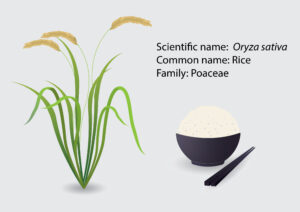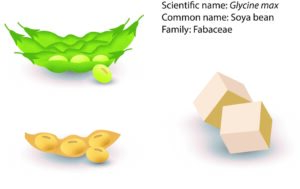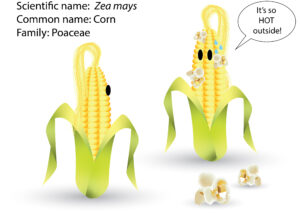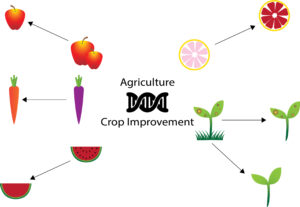
Rice to meet you!
General description Rice, scientifically known as Oryza sativa, is one of about twenty aquatic or swamp-dwelling, annual or perennial grasses in the genus, occurring wild in warmer parts of Africa, Asia, and Australia. Rice falls under the family of grass, which is Poaceae, which consists of about three hundred and fifty species of different genera that includes seven species of Oryza, which have been reported as weeds of rice. The genus Oryza includes more than […]
Read More
Give peas a chance, Soybean
General description Soybean is one of the most popular foods around the world due to its nutritious and medicinal values. There are over 2500 varieties of soybeans that come in many sizes, shapes, and colors. Glycine is a genus of eighteen slender, twining, or trailing perennial legumes that is under an annual legume of the pea family, Fabaceae. Most Glycine are native to Australia but extend to eastern Asia and the Pacific islands. The only cultivated species, […]
Read More
Not that corny, but a group of diversified individualists – Corn
General Description Corn is an essential crop and one of the most consumed staple foods consisting of about 20% of human’s calorie intake globally. Scientifically named as Zea mays. Indigenous populations in Mexico first domesticated corn around 10,000 years ago, it has evolved through thousands years of intensive breeding and shown powerful usage for food, feed, fiber, and fuel. Known as the mother grain of Americans and the driver of the US economy, the United […]
Read More
Before they are served to our table, crop improvement
Naturally, we judge the foods based on their appearances such as color, shape, smell, and arrangement. Domestic crops have traits that are significantly different from their wild relatives. Undoubtedly tomato is red, banana is yellow, the carrot is orange. But how they end up being what they are on our plates? Can you imagine eating a banana with large seeds, a carrot in purple color, or tomato in black color? What happened to those fruits […]
Read More